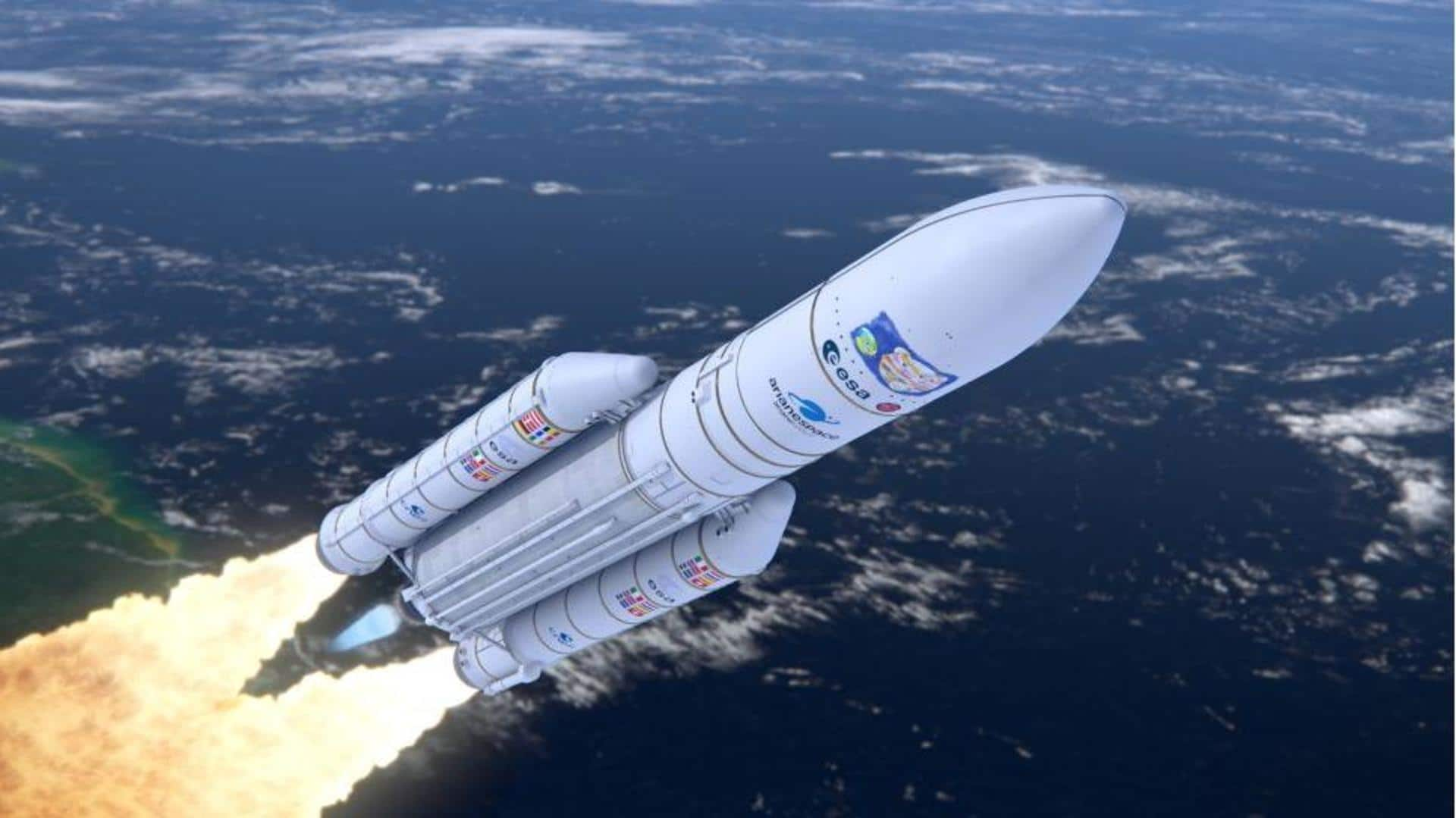
ESA launches JUICE mission to probe Jupiter's moons: Key facts
What's the story
European Space Agency has successfully launched the JUICE (Jupiter Icy Moons Explorer) mission, which will probe Jupiter and three of its moons—Europa, Callisto, and Ganymede.
The spacecraft took off from Europe's Spaceport in Kourou, French Guiana, aboard an Ariane 5 rocket. The mission was originally scheduled to launch yesterday but was postponed owing to lightning risk.
Launch
When will JUICE send its first signal to Earth?
The 6,200kg JUICE spacecraft is expected to separate from the Ariane 5 launcher 28 minutes after the lift-off. It will send its first signal to Earth about nine minutes after the separation happens.
Over the next 17 days, the spacecraft will deploy its solar arrays, antennas, and other instruments. This will be followed by three months of testing and preparing the instruments.
Launch
It will take 8 years for JUICE to reach Jupiter
JUICE will take about eight years to reach Jupiter. It will rely on gravitational assists past Venus, Mars, and Earth to enter Jupiter's orbit in July 2031.
Six months before the spacecraft enters Jupiter's orbit, it will begin its nominal science phase, said ESA in a blog post.
The mission is equipped with 10 sophisticated scientific instruments.
Instruments
NASA and JAXA have contributed with parts and instruments
JUICE's suite of instruments is said to be the "most powerful remote sensing, geophysical and in situ payload complement ever flown to the outer solar system."
NASA has contributed one instrument, called the UV imaging Spectrograph, and hardware for two European-provided instruments Radar for Icy Moons Exploration and Particle Environment Package.
The Japan Aerospace Exploration Agency (JAXA) has also contributed hardware for some instruments.
Mission objectives
What is the mission about?
JUICE will explore five "key mysteries." One is if the Jupiter system hosts life, or if it did in the past.
The mission will study what a typical gas giant is like.
Interestingly, the Jovian moons, Ganymede, Europa, and Callisto are thought to hold oceans of liquid water beneath their icy crusts. JUICE will help us better understand these ocean worlds.
Ganymede
JUICE will closely study Ganymede
The mission will study Ganymede—the largest moon in the solar system. It is also the only known moon to have its own magnetic field, meaning it could have Earth-like liquid iron core.
JUICE will be the first spacecraft to orbit a moon in the outer solar system.
The mission will also help answer how Jupiter's complex environment has shaped its moons and vice versa.
Europa and Callisto
The JUICE mission will perform two flybys of Europa
Europa might make the most interesting target for the JUICE mission. The moon's ocean is believed to be in direct contact with a rocky floor, which could provide food and energy for life considering hydrothermal vents burst upward.
On the other hand, Callisto is not considered to host life in its oceans.
JUICE will perform two flybys of Europa and 21 flybys of Callisto.
Termination
The mission could reach its end in September 2035
The JUICE mission is expected to come to an end in September 2035, according to the official timeline provided by ESA.
The spacecraft will be made to crash land on Ganymede's surface, leading to the mission's termination, unless a discovery is made during the course of the mission which would suggest this maneuver might contaminate the moon's ocean.